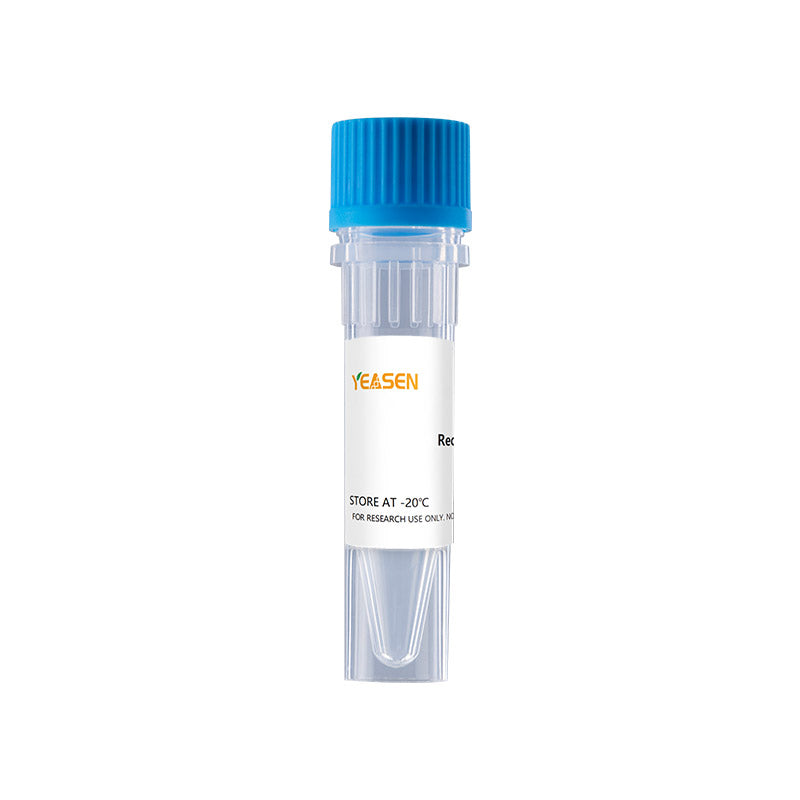Description
Interleukin-13 (IL-13) was first recognized for its effects on B cells and monocytes, where it upregulated class II expression, promoted IgE class switching and inhibited inflammatory cytokine production. IL-13 is a monomeric 17 kDa immunoregulatory cytokine that plays a key role in the pathogenesis of allergy, cancer, and tissue fibrosis. Mature human IL-13 shares approximately 58% amino acid sequence identity with mouse and rat IL-13. It has become evident that IL-13 is a key mediator in the pathogenesis of allergic inflammation, and IL-13 is key proinflammatory cytokines in asthma. The cytokines interleukin IL-13 have pleiotropic effects on a variety of cell types and impact both pathologic changes and tissue remodeling.
Product Properties
|
Synonyms |
BHR1interleukin-13, IL13, interleukin 13, MGC116786, NC30, P600 |
|
Accession |
|
|
GeneID |
|
|
Source |
E.coli-derived Human IL-13, Gly35-Asp146. |
|
Molecular Weight |
Approximately 12.5 kDa. |
|
AA Sequence |
GPVPPSTALR ELIEELVNIT QNQKAPLCNG SMVWSINLTA GMYCAALESL INVSGCSAIE KTQRMLSGFC PHKVSAGQFS SLHVRDTKIE VAQFVKDLLL HLKKLFREGR FN |
|
Tag |
None |
|
Physical Appearance |
Sterile Filtered White lyophilized (freeze-dried) powder. |
|
Purity |
> 97% by SDS-PAGE and HPLC analyses. |
|
Biological Activity |
The ED50 as determined by a cell proliferation assay using human TF-1 cells is less than 1 ng/mL, corresponding to a specific activity of > 1.0 × 106 IU/mg. Fully biologically active when compared to standard. |
|
Endotoxin |
< 1.0 EU per 1μg of the protein by the LAL method. |
|
Formulation |
Lyophilized from a 0.2 μm filtered concentrated solution in PBS, pH 7.4 with 5% trehalose. |
|
Reconstitution |
We recommend that this vial be briefly centrifuged prior to opening to bring the contents to the bottom. Reconstitute in 20 mM HCl to a concentration of 0.1-1.0 mg/mL. Stock solutions should be apportioned into working aliquots and stored at ≤ -20℃. Further dilutions should be made in appropriate buffered solutions. |
Shipping and Storage
The products are shipped with ice pack and can be stored at -20 ℃ for 1 year.
1 month, 2 to 8 °C under sterile conditions after reconstitution.
3 months, -20 °C under sterile conditions after reconstitution.
Recommend to aliquot the protein into smaller quantities when first used and avoid repeated freeze-thaw cycles.
Cautions
1.Avoid repeated freeze-thaw cycles.
2.For your safety and health, please wear lab coats and disposable gloves for operation.
3.For research use only!
Payment & Security
Your payment information is processed securely. We do not store credit card details nor have access to your credit card information.
Inquiry
You may also like
FAQ
The product is for research purposes only and is not intended for therapeutic or diagnostic use in humans or animals. Products and content are protected by patents, trademarks, and copyrights owned by Yeasen Biotechnology. Trademark symbols indicate the country of origin, not necessarily registration in all regions.
Certain applications may require additional third-party intellectual property rights.
Yeasen is dedicated to ethical science, believing our research should address critical questions while ensuring safety and ethical standards.

